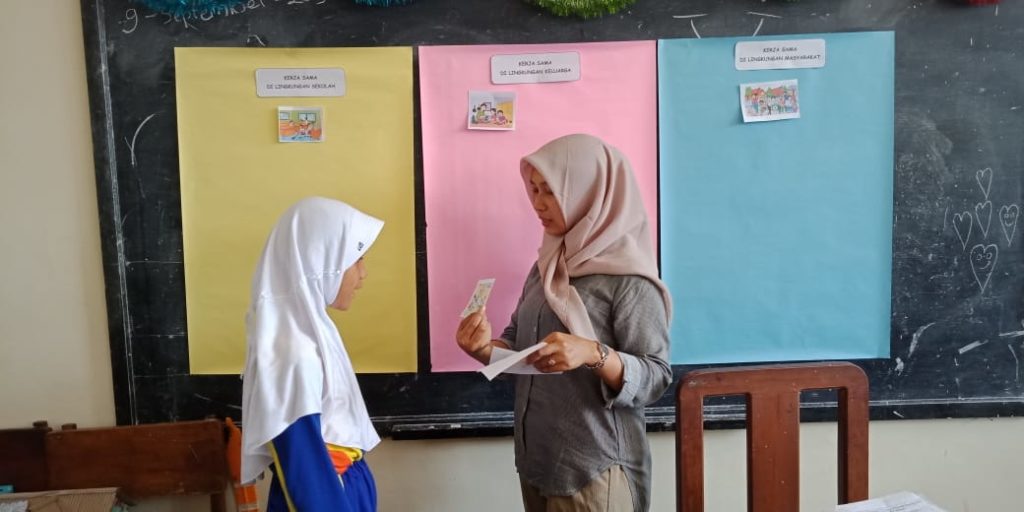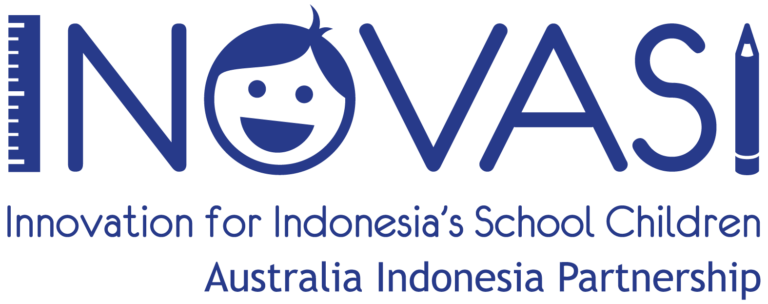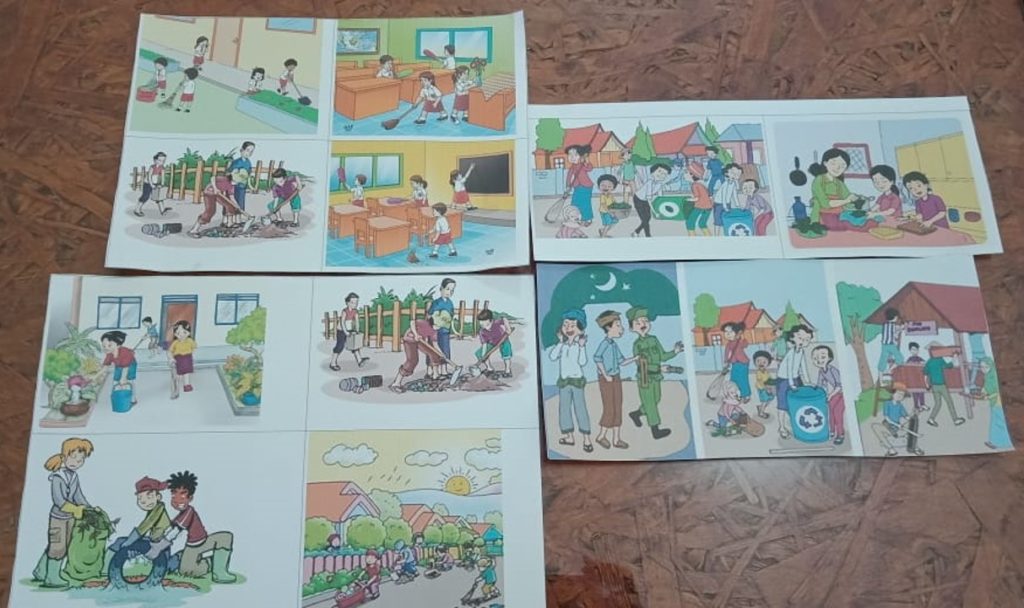
Being a teacher is a profession that most students aspire to when asked what they want to do when they grow up. This, of course, is something Mismiati, S.Pd., a grade 3 teacher at SDN Junrejo 02 state elementary school in Batu City, who has been entrusted to be a teacher for the last two years, is proud of. Previously, Mismiati was a counseling teacher who taught special needs students, from which she gained plenty of valuable experience. Based upon her experience as a counseling teacher, Mismiati has been trying to understand the various characters of the grade three students.
According to Mismiati, each student is unique and comprehends the teacher’s explanation at his or her own speed. This can be challenging. The learning strategies and methods that Mismiati uses must be according to the personalities or abilities of her students. One of the methods she uses is hands-on activities, where students become doers who truly experience what they are learning. With hands-on practice, they can see, hear, and feel for themselves what they’re learning and understand the expected learning goal. According to Mismiati, with this method, the learning outcome (on average) is better than learning from theory via lecturing.
With this method, all students are expected to demonstrate a cooperative attitude and become better when working together. In her class, Mismiati groups regular students with special needs students. In the past, she grouped special needs students together in their own group. By using the Social Activity Pictures learning media, all students, including those with special needs, can better understand the purpose of the material being studied and, with that, collaboration can take place.
Utilizing Social Activity Pictures in Learning
Arranging the learning strategy both for special needs students and regular students must be designed in such a way so that it can run smoothly and effectively. One method that is considered appropriate for Mismiati’s class is the peer tutoring, in which students learn in small groups.
Here is an example of how Mismiati accomplishes this: A total of 31 students are divided into six groups, each consisting of five to six students, including special needs students. Within each group, there is a division of tasks: the logistics personnel (in charge of selecting pictures and distributing pictures), the spokesperson (in charge of delivering the results of the story), and the time keepers (assigned to keep time as set by the teacher).
The following are the steps that Mismiati takes in a learning activity in which she uses cards that depict of the types of cooperation in several environments:
- Provide a box containing various pictures depicting cooperation at home, at school, and in the community.
- Assign the logistics personnel from each group to select a picture. Give the students time to observe the pictures, and then have them share the stories based on their observations. Next, have the students participate in a question and answer session among themselves about those pictures.
- Prepare three large pieces of different colored cardboards for each type of cooperation so that students can easily distinguish between them. Have the students group the pictures, posting them in their respective environments according to the type of cooperation.
- Discuss the boards together with the students. Have the students use the prepared student worksheets to write down their own experiences that are similar to the ones in the pictures.
Based on the steps, each group is assigned to randomly take one picture from the box; that picture, might be the same as or different from a picture that another group selects. When each group has their picture, Mismiati gives each group the opportunity to observe it and then gives them five minutes to tell the story in the picture, taking turns.
Afterwards, the logistics personnel are asked to put the picture they took back into the box. Mismiati then takes all of the pictures out of the box and puts them on the table. She asks the logistics personnel to each take three pictures, each depicting a different type of environment.
The students are then asked to observe and discuss those three pictures and given ten minutes to discuss their observations. Each group is given the opportunity to exchange pictures with other groups; and the students will once more explain the differences between those three pictures.
Mismiati notes the children’s enthusiasm when conveying their stories and opinions after having observed the pictures. The same applies to the special needs students who are able to convey their stories and opinions in a simple language. She then provides and posts three different colored cardboard sheets of paper on the blackboard to group the pictures based on the types of cooperation according to their respective environments.
In order to group according to the types of cooperation, Mismiati asks the students to post the pictures on the given cardboard. By taking turns in each group, the students have the opportunity to post the appropriate picture. When the students are done, she and her students discuss and check whether the groupings are correct. In this learning process, the students actively take turns to answering as Mismiati guides them to the correct answer.
In the end, the students are able to understand the type of cooperation within the school, home, and community environment by using the social picture medium.
The students are then given the next assignment, which is to choose one of the pictures and use their worksheet to write a story about an event or a personal experience that is similar to the picture. When they have finished writing, she asks several students to present their works.
“I think it’s really amazing because by employing a teaching strategy that uses the playing method and pictures, the students become more enthusiastic, engaged, and confident in storytelling. The special needs students also share their stories, and they are even more excited. Telling a story about a picture without having to write it is a form of literacy,” explains Mismiati.







